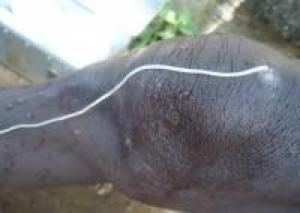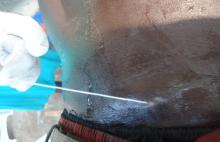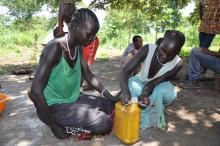New Guinea Worm Case Confirmed in Ethiopia
A new Dracunculiasis (commonly known as Guinea Worm Disease) case has been confirmed in Ethiopia. The third case of 2014 was reported on 2 December from Gog district in Gambella Region, southwest Ethiopia. Aggressive interventions, such as abating of ponds, were immediately taken to prevent other villagers from getting the disease.
Ethiopia is one of the four Guinea Worm endemic countries (Chad, Ethiopia, Mali, and South Sudan). Since the inception of the Ethiopian Dracunculiasis Eradication Programme (EDEP) by the Federal Ministry of Health, significant achievements have been witnessed in the country taking Ethiopia closer to eradicating the painful disease. The Programme coordinated by the Ethiopian Public Health Institute (EPHI) has accelerated the implementation of eradication activities in close collaboration with WHO, Carter Center and other partners. In 2013, a total of seven cases were reported from Gambella, the only endemic region in the country. The three cases of 2014 signify a reduction of 57% compared to 2013.
The National Review Meeting of the Ethiopian Dracunculiasis Eradication Programme was held in Jimma Town, 03-04 December 2014.The meeting concluded that EDEP should be strengthened through the increase of human resource and enhanced documentation at all levels. WHO has been supporting the Ethiopian Dracunculiasis Eradication Programme since it began in 1994 through surveillance and enhancing community awareness on the disease and the cash reward. The Ethiopian Dracunculiasis Eradication Programme offers a new cash reward of 2000 Ethiopian Birr (about 100 USD) for voluntary reporting of dracunculiasis cases and for complying with the case containment measures.
Dracunculiasis is an infection with Dracunculus medinensis, a nematode worm. It is caused by drinking water containing water fleas that have ingested Dracunculus larvae. In the human body, the larvae are released and migrate through the intestinal wall into body tissues, where they develop into adult worms causing intense pain, and eventually emerge through the skin, usually at the feet, producing oedema, a blister and eventually an ulcer, accompanied by fever, nausea, and vomiting. There are no drugs available for the treatment of this disease. However, it can be prevented by protecting water sources and filtering potentially contaminated water.
For more information, please contact Dr Zeyede Kebede Zeleke, Guinea Worm Programme Coordinator, WHO Ethiopia; Email: zelekez [at] who.int (zelekez[at]who[dot]int)
Photos: WHO Ethiopia





